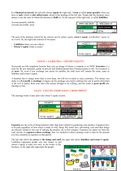Class notes
Summary Accounting Game, ISBN: 9781402211867 New Business Models
- Course
- Institution
- Book
Hey! In these documents you will find all you need for your new business model exam or assignment. One document covers all the topics from classes, and the other one is a summary of the accounting book! It was really helpful for me having them during my presentation and the actual exam! B...
[Show more]




